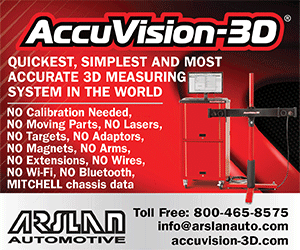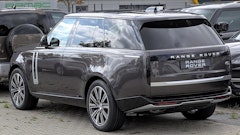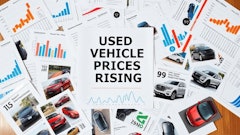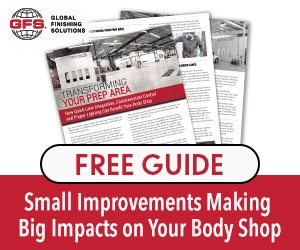
By Jeff Sanford
Toronto, Ontario — August 19, 2017 — Will this be remembered as the official start of the modern world of autonomous vehicles (AVs)? There’s been a lot of heat and hype about driverless cars, but lately it seems like it’s solidifying into something a little more concrete.
– Ford has announced it will have an AV on the road by 2021. This is the first time one of the Big Three automakers has set a date for an AV. Mark Fields, Ford’s CEO, has gone on record saying the company planned to mass produce driverless cars and have them in commercial operation in a ride-hailing service by 2021.
Fields’s announcement was short on specifics, but he said that the vehicles the company envisions in this role would very different from what we currently see on the roads.
“That means there’s going to be no steering wheel. There’s going to be no gas pedal. There’s going to be no brake pedal,” said Fields during a press event. He went on to say, “If someone had told you 10 years ago, or even five years ago, that the CEO of a major automaker American car company is going to be announcing the mass production of fully autonomous vehicles, they would have been called crazy or nuts or both.”
Ford has also announced plans to expand its Palo Alto research centre, literally doubling the number of employees who work there. Ford also announced the acquisition of Israeli start-up, Saips, which specializes in “computer vision” technology. Ford has also announced investments in three other companies involved in various AV-friendly technologies. Ford now has a $75 million stake in Velodyne, which makes LIDAR sensors, an investment in Nirenberg Neuroscience (another “computer vision” company) and has put some money into Civil Maps, a start-up that’s developing 3D digital maps.
An article in the New York Times quotes a Barclays analyst in its report, predicting that once autonomous vehicles are in widespread use, “… auto sales could fall as much as 40 percent as people rely on such services for transportation and choose not to own cars.” The analyst went on to say a “… combination of driverless cars and ride-sharing services represented a ‘seismic shift’ for the auto industry that would be greater than the advent of the moving production line was roughly a century ago.”
– The CEO of Uber, Travis Kalanick, revealed to Bloomberg that the company is “preparing to add self-driving cars to its fleet of active drivers in Pittsburgh as soon as this month.” The plan will deploy around 100 modified Volvo XC90s outfitted with self-driving equipment. Each vehicle will be staffed by one engineer, who can take the wheel as/when needed, and a co-pilot to observe and take notes. A computer in the trunk will also be recording trip and map data.
– A report from Reuters suggests that Tesla has removed the word “autopilot” and a Chinese term for “self-driving” from its China website. According to the report, “a driver in Beijing who crashed in ‘autopilot’ mode complained that the car maker overplayed the function’s capability and misled buyers.” It was only a couple weeks ago that the first US fatality in a Tesla on Autopilot mode occurred. The case in China apparently occurred earlier this month on a Beijing commuter highway after the car “failed to avoid a vehicle parked on the left side, partially in the roadway, damaging both cars but causing no injuries … It was the first known such crash in China …[Since then] references to autopilot … were taken off the webpage for the Model S sedan by late Sunday.”
A new phrase that translates as “self-assisted driving” is now being used. The report goes on to note that Tesla China staff have “additionally undergone training in response to the August 2 crash to re-emphasize that employees must always keep two hands on the wheel when demonstrating the autopilot function. Other Tesla drivers interviewed by Reuters said China sales staff took their hands off the wheel while demonstrating the function. Under Chinese law, drivers are required to keep two hands on the wheel at all times.”
– “Eventually, widespread adoption of autonomous driving and automated accident-avoidance technology could weaken automobile insurers. The collapse of auto insurance premiums in America and Europe as autonomous cars take hold would create a ‘giant, sucking sound,’ Kate Brown, Senior Vice President of Swiss Re, told a recent conference on autonomous driving at the University of Michigan law school, according to a report on Yahoo Canada.
-A report from Reuters says Audi is “rolling out technology that will allow its vehicles in the United States to communicate with traffic signals, allowing for a more stress-free ride in what it says is the car industry’s first commercial use of the nascent technology.”
Audi of America said that select 2017 Q7 crossover and A4 sedan models built after June 1, 2016, will be equipped with so-called, “vehicle-to-infrastructure technology … Known in the industry as ‘V-to-I,’ the technology allows traffic signals and other infrastructure to exchange safety and other operational data wirelessly to vehicles over the cloud.”
The report goes on to note that, “Eventual applications of the technology will help mitigate crashes and reduce congestion on roads and highways … Audi’s system allows the vehicle to display a countdown before a red light turns to green … The countdown will also appear on the dashboard if the vehicle determines it will not be able to make an approaching light before it turns red, to allow the driver to begin to brake … While waiting for a red light to turn green, the display will disappear a few seconds before the light turns green, forcing drivers to pay attention to the intersection and determine when it is safe to proceed … Future applications of the technology could see it linked to the car’s navigation system or its stop/start functions. Another possible eventual use is that traffic signals could advise the vehicle to keep to a certain speed in order to match the flow of traffic lights, executives said. Audi plans to roll out the capability in five to seven U.S. cities this year, with cities to be switched on one by one. The company would not disclose which cities would be first.”





















